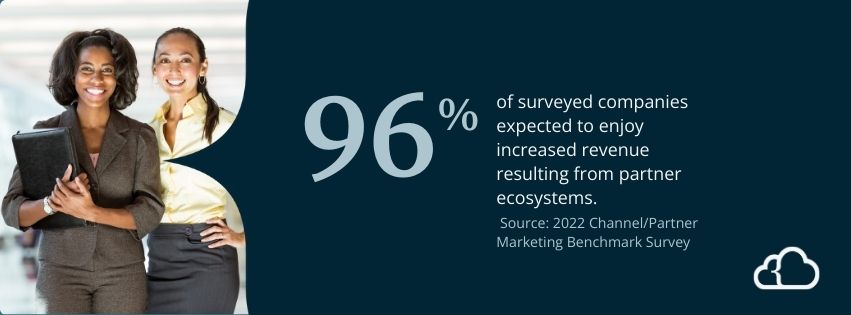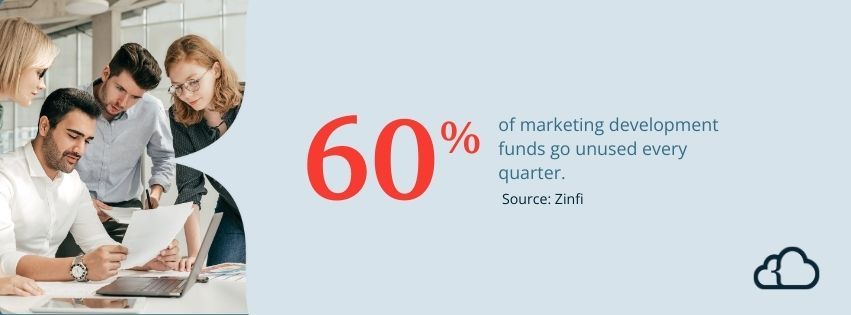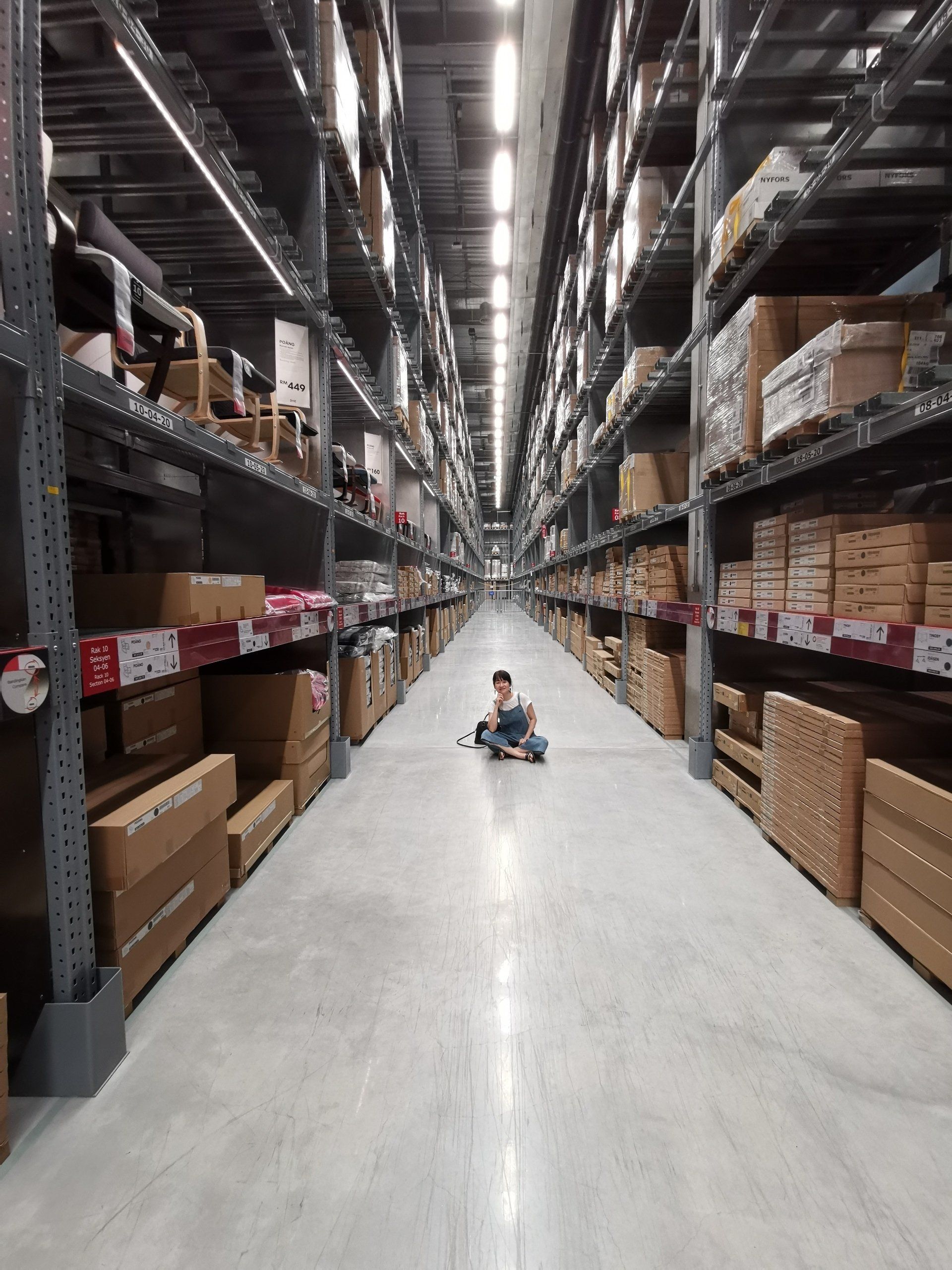Marketing Development Funds: What They Are and How You Should be Managing Them
Channel partnerships can be lucrative relationships, fueled by designated marketing funds. The right software controls those funds, monitoring ROI and ensuring partner success.
Businesses discovered long ago that they didn’t have to complete every part of the sales process alone. Instead, they could team up with other companies to market goods and services, creating channel partnerships that benefit both entities and investing in those arrangements through marketing development funds (MDF).
However, companies must manage these arrangements carefully. They need to choose partners wisely, clearly outline the activities this money can support, and encourage open communication. Otherwise, they’ll just waste time and money on anti-productive business relationships.
We know wasting resources on fruitless endeavors is frustrating, and we don’t want your company to experience it. NetSuite Enterprise Resource Planning (ERP) systems include several features that help manage and track MDF so you can foster successful channel partnerships.
SuiteDynamics partners with NetSuite to customize and implement ERP software. Our experts can equip your company with the robust system it needs to support partner businesses.
Our guide below outlines the characteristics of a well-developed MDF program and describes how NetSuite features can help it succeed. Read through the piece, and then schedule a free consultation to discuss how the software can support your own channel partnerships.
Key Takeaways
- A channel partner is a business or individual that collaborates with your company to market, sell, and distribute products or services, acting as an intermediary to add value for customers.
- MDFs are financial resources a company provides to its channel partners to support marketing efforts like advertising, trade shows, and digital marketing, ultimately boosting product sales.
- A successful MDF program relies on clear objectives, simple guidelines, effective communication, flexibility, automation, data-driven decisions, and strong partner relationships.
- NetSuite helps manage MDF programs by offering centralized data, automation, customization, and real-time reporting, streamlining the management of fund allocation, approvals, and tracking.
- Successful MDF programs involve clear objectives, transparent guidelines, ongoing partner communication, scalability, efficient processes, and post-activity evaluations.

What Are Channel Partners?
First, let’s establish the definition of “channel partner.” A channel partner is a business or individual that collaborates with your company to market, sell, and distribute your products or services. These partners typically operate as intermediaries, adding their services or expertise to the product to enhance customer value.
For example, you could consider SuiteDynamics a channel partner for NetSuite since we demo, customize, and implement its ERP system. We don’t develop the product but collaborate with NetSuite to market and sell the system.
Channel partners can help expand your company's reach by leveraging your networks and expertise in specific markets. This strategy often increases sales and brand presence, and you don’t have to engage with every customer or market directly.
“The main reason for using channel partners is to deliver local value to clients and to accelerate coverage and revenue growth,” Oscar Torres writes in Forbes. “And, what’s more: All of this without having to increase fixed costs by hiring thousands of new employees. Instead, companies can use their resources to innovate and offer best-in-class solutions.”
This strategy seems to work well. According to the 2022 Channel/Partner Marketing Benchmark Survey, 96% of surveyed companies expected to enjoy increased revenue from partner ecosystems. That’s why businesses support their partnerships through marketing development funds.
What Are Marketing Development Funds (MDF)?
Marketing Development Funds (MDF) are a financial resource your company offers to a channel partner who markets and sells your products. The partner can use these funds to execute marketing activities—like advertising campaigns, trade shows, or even digital marketing efforts—that help boost your product sales.
The concept is simple: financially supporting your partners' marketing efforts helps them sell more. That achievement, in turn, benefits your bottom line.
“MDF can create a significant return on investment for your organization and your partners if used effectively, tracked carefully, and measured via documented results,” JS Group Chief Channel Officer Kris Blackmon writes. “It will take time to get the program right, but with detailed planning, automated systems, and consistent partner communication, MDF can pay real dividends.”
Of course, like all things involving money, you must develop a clear plan and management process. That’s where a robust ERP system, like NetSuite, comes into play. Schedule a free consultation with SuiteDynamics experts to learn more about the system and how it can help your company make the most of MDF investments.
Why Use NetSuite ERP for Managing MDF Programs?
A NetSuite ERP system is a cloud-based platform that helps manage various business operations, including finance, inventory, and, yes, even MDF programs. Here’s why it’s a good fit:
- Centralized Data Management: NetSuite stores all your data—from financials to customer interactions—in one place so you can track MDF activities and results easily.
- Automation: NetSuite automates many manual processes for managing MDF, such as fund approvals, disbursements, and reporting. Consequently, it reduces error risks so your team can focus more on strategy than paperwork.
- Customization: NetSuite helps tailor the MDF program to fit your specific needs, whether setting up different types of funds, defining eligibility criteria, or tracking different KPIs.
- Real-Time Reporting: NetSuite’s real-time reporting tools offer instant insight into how MDF funds are being used, what’s working, and what’s not, boosting your ability to make informed decisions.

What Makes a Good Marketing Development Funds (MDF) Program?
As you know, the most successful businesses know how to use resources well. Yet, as much as 60% of marketing development funds go unused every quarter, according to a Zinfi study.
Therefore, a well-constructed MDF program could give your business an edge over competing companies that may not invest those resources wisely. Below, we’ve listed some components of a successful program.
1. Clear and Aligned Objectives
A good MDF program starts with clear, well-defined objectives aligning with your business and marketing goals. Decide whether your business wants to increase brand awareness, drive more leads, boost sales in a specific region, or launch a new product. Use the SMART method when crafting these goals so they are Specific, Measurable, Achievable, Relevant, and Time-bound.
With clear objectives, your channel partners will know exactly what you expect of them and how they can contribute to mutual success. You can also design the program to meet those objectives effectively.
2. Simple and Transparent Guidelines
Complexity is one of an MDF program’s most significant hurdles. Your partners could grow frustrated and disengaged if they don’t understand how to access or use the funds. Therefore, create simple, transparent guidelines that outline:
- Eligibility Criteria: Who can apply for funds, and under what circumstances?
- Fund Allocation: How are funds distributed? Is it based on performance, potential, or something else?
- Approved Activities: What types of activities qualify for MDF? (e.g., digital marketing, trade shows, co-branded advertising)
- Reimbursement Process: How do partners get reimbursed, and what documentation is required?
Straightforward guidelines help partners participate in the program and maximize its impact.
“There’s no need to overcomplicate your new program,” Blackmon writes. “Giant enterprises with long-established channel programs, like Cisco or Dell, have convoluted programs which often require partners to jump through so many hoops in order to access MDF that smaller or lower-midmarket firms don’t have the resources to even try. Keep your new program simple and grow it only as you must.”
3. Effective Communication and Support
Communication is the backbone of any successful MDF program. Regularly inform your partners about fund availability, how to apply, and any upcoming deadlines. A good MDF program also includes ongoing support and resources like templates, best practices, and case studies to help partners maximize the funds. Consider appointing a dedicated account manager or support team who can answer partners’ questions.
4. Flexible and Scalable Structure
Every partner is different, with varying needs, capabilities, and markets. That’s why a one-size-fits-all approach rarely works. A good MDF program is flexible enough to accommodate these differences. For example, you might:
- a. Tier the Program: Offer different funding levels based on partner performance or market size.
- b. Allow Customization: Allow partners to propose their own marketing activities within specific guidelines.
- c. Adapt Over Time: Regularly review and update the program to ensure it stays relevant and effective.
Flexibility and scalability help tailor the program to fit your partner network’s diverse needs, making it more appealing and accessible.
5. Automated and Efficient Processes
Managing an MDF program manually can be a nightmare. There are many moving parts, from tracking requests to processing reimbursements. Automating these processes saves time and reduces the risk of errors and delays.
That’s why we recommend using a NetSuite ERP system to handle tasks ranging from fund allocation to reporting. Automation helps process requests quickly, pay partners on time, and maintain visibility into fund usage.
6. Data-Driven Decision Making
Ground your MDF program in data. Track the performance of funded activities to see what’s working and what’s not. This way, you can make informed decisions about where to allocate funds in the future.
Set up key performance indicators (KPIs) to measure the program’s success. These metrics could include ROI, lead generation, sales growth, or market penetration. Use the data to refine and improve the program.
7. Incentives for Partner Participation
Even with the best MDF program, some partners may still be slow to take advantage of the funds, so use incentives. Consider offering bonuses, tiered rewards, or additional support for partners who continually participate and demonstrate MDF success.
Incentives encourage participation and create a sense of competition among partners, driving better results.
8. Post-Activity Evaluation and Feedback
Always evaluate an MDF-funded activity’s effectiveness after it’s completed. Remember, an MDF program isn’t just about crunching numbers; it’s also about gathering helpful feedback from partners.
Ask them what worked well, what challenges they faced, and what they might do differently next time. Their answers will help refine your program and make it even more effective in the future.
9. Strong Partner Relationships
Essentially, a good MDF program involves more than just money. You must also design it to build strong, collaborative relationships with your partners. Show them you’re invested in their success, and they’ll be more likely to invest in your program.
Regular check-ins, joint planning sessions, and a genuine interest in a partner’s business goals can go a long way in strengthening these relationships.
A NetSuite ERP system supports every aspect of a well-established MDF program, giving your company the best chance to increase revenue. Schedule a free consultation with the SuiteDynamics team to ask more questions about the software and how it helps manage and track channel partner support.
Steps to Create an MDF Program Using NetSuite ERP
We’ve explored what makes a successful MDF program, so let’s discuss how to develop one. The following is a step-by-step guide for setting up an MDF program using a NetSuite ERP system.
1. Define Your MDF Program Goals
As we said before, clarify your program’s goals first. Decide if you want to increase brand awareness, drive more leads, or boost sales for a particular product line. These objectives will guide the program’s structure and fund allocation.
2. Set Up Fund Allocation
You can create a fund allocation process in NetSuite, which involves designating different MDF categories. For instance, you might allocate specific amounts for digital marketing, events, or sales incentives.
- Create a Custom Record: Create a custom record in NetSuite to manage the MDF funds. This record will track all relevant details like the amount allocated, used, and remaining.
- Define Approval Workflows: Set up workflows to ensure fund requests are automatically routed to the appropriate person for approval.
3. Develop Criteria for Fund Usage
Not every partner activity should qualify for MDF support, so define clear criteria. For example, you might want the funds only to finance activities directly promoting your product or meeting a minimum spend threshold.
- Eligibility Rules: Use NetSuite’s customization tools to enforce your rules. For example, create a validation process that ensures a request meets your criteria before allocating funds.
4. Implement a Fund Request Process
Any successful MDF program must have a simple process for requesting funds. In NetSuite, you can create a portal or form where partners can submit requests. You can design this form to capture all necessary information, such as the proposed activity, budget, and expected outcomes.
You can also set up an automated approval process to streamline fund requests and ensure quick turnarounds.
5. Track and Report on MDF Activities
Once funds are allocated, you need to track their use and the results they generate. NetSuite offers reporting tools that make this easy.
- Real-Time Dashboards: Set up dashboards in NetSuite to monitor MDF status.
- ROI Tracking: Use NetSuite’s analytics capabilities to calculate the return on investment (ROI) for MDF-supported activities, determining which delivers the best results. Adjust your strategy accordingly.
6. Communicate with Your Partners
As we said, communication is critical to an MDF program’s success. NetSuite’s automated features help inform partners about available funds, request statuses, and best practices for fund usage. These features include:
- Automated Emails: Set up automated emails to notify partners when their fund requests are approved, running low, or reports are due.
- Partner Portal: Consider setting up a partner portal within NetSuite where partners can access all relevant information about the MDF program.
Discover more details about NetSuite’s capabilities for MDF programs during your free consultation with SuiteDynamics experts. We’ll ensure your company has fully customized software that helps control how funds are applied for and used.
Develop Successful Partnerships that Last
Channel partnerships can potentially make significant amounts of money for your company, but you must manage them correctly and closely monitor any marketing development funds used. Otherwise, you risk wasting time in fostering the relationship.
We don’t want your channel partnerships to fail. SuiteDynamics experts can customize and implement a NetSuite ERP system that helps disburse, manage, and track MDF to strengthen your partnerships and increase your chances for success.
Schedule a free consultation with our team today and discover how well your company can run.
We pull information from NetSuite material, SuiteDynamics experts, and other reliable sources to compose our blog posts and educational pieces. We ensure they are as accurate as possible at the time of writing. However, software evolves quickly, and although we work to maintain these posts, some details may fall out of date. Contact SuiteDynamics experts for the latest information on NetSuite ERP systems.
Part of this text was generated using GPT-3, OpenAI’s large-scale language-generation model. After generating the draft language, our team edited, revised, and fact-checked it to ensure readability and accuracy. SuiteDynamics is ultimately responsible for the content of this blog post.












